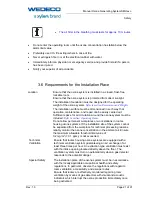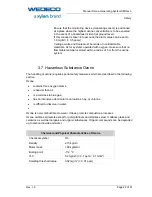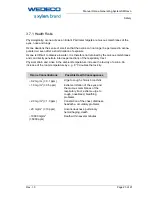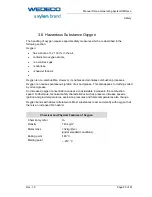
Manual Ozone Generating System SMOevo
Safety
Rev. 1.0
Page 25 of 91
3.8 Hazardous Substance Oxygen
The handling of oxygen requires special safety measures which are described in the
following section.
Oxygen
has a share of
≈
21 Vol % in the air,
contains two oxygen atoms,
is a colorless gas,
is
odorless,
is heavier than air.
Oxygen is non-combustible. However, it enables and promotes combustion processes.
Oxygen can cause spontaneous ignition of oil and grease. This also applies to clothing soiled
by oil and grease.
An increased oxygen concentration causes a considerable increase in the combustion
speed. Furthermore, technical safety characteristics such as pressure increase speeds,
ignition and glow temperatures, explosion pressures and flame temperatures also change.
Oxygen bonds with almost all elements. Most substances react so violently with oxygen that
there is an increased fire hazard.
Chemical and Physical Features of Oxygen
Chemical symbol
O
2
Density 1.43
kg/m
3
Molar mass
≈
32 kg/kmol
(under standard conditions)
Boiling point
-183 °C
Melting point
-219 °C















































